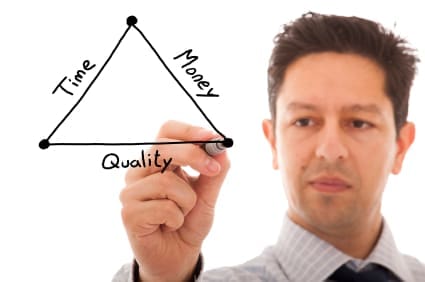Defining success criteria has been shown again and again in real-word situations to be instrumental in projects being successful. Any project management training course from the APM Project Fundamentals Course right up to the most advanced professional PM qualifications will teach the importance of accurately defining project success criteria. By knowing what we are aiming for we are more likely to achieve it because we can adjust our course as we go to help us stay on track and maximise the chances of a successful project.
So when you are embarking on a new project ask yourself the following questions:
What Is Success?
How Can We Identify Success?
What Factors Contribute to a Successful Project?
How Can We Define Meaningful Success Criteria?
The fact that we must ask ourselves these questions is an indication that the notion of project success can be quite vague. One of the reasons for this is that often there are many individuals and groups involved in a project who have different expectations of the final product so they view that product from different perspectives.
The software developer will aim to produce a system that functions well and has few bugs but the user will want a system that makes their job quicker or easier. The digital marketing professional will aim to increase rankings and traffic to a website but the business owner is only focused on increased sales. The two sides of the same coin do not always end up producing a “successful” result, particularly when a common success criteria is the nebulous concept of “customer satisfaction”.
Some projects can go well over budget but still be viewed as a success by the client and stakeholders. This suggests that apparent project management failure does not always result in project failure so a combination of success elements are required for a truly successful project.
Typical Success Criteria
The success criteria of traditional project management theory were the triumvirate of cost, time and scope but since these alone have been seen to be insufficient to define true business success it is necessary to add other qualitative criteria.
One such success criteria is the benefit reaped by the organisation affected by the project. Benefits can be seen from a number of perspectives because different groups will have benefited differently. For example, a company may profit financially through streamlining its processes but the same project could result in job losses, which can have a detrimental effect on the company in terms of the loss of trust and morale of the employees left behind and their consequent reduction in productivity. This may even negate the gains achieved through implementing the project. It is, therefore, important that a project balances the benefits “on paper” with the satisfaction of human beings.
So we now have cost, time, scope, organisational benefits and customer satisfaction on our list of success criteria.
But there are other qualitative success criteria that we could include, such as reliability, ease-of-use and ease-of-maintenance. Depending on the type of project we may also want to know that it will stand the test of time and be useful for many years to come so “future-proof” might also be a success criteria, although that is particularly difficult to measure at the end of the project.
Whatever success criteria are relevant to your project they should always be easy to define and understand so that there is no doubt whether they have been achieved or not. In an ideal world all of the success criteria would be incorporated into the project management planning phases and be required in order to deem the project a success but since we don’t usually do that it is often necessary to prioritise the success criteria.

